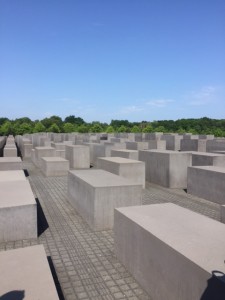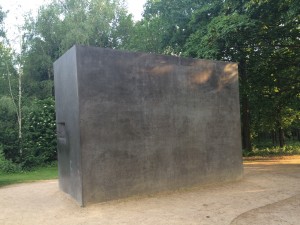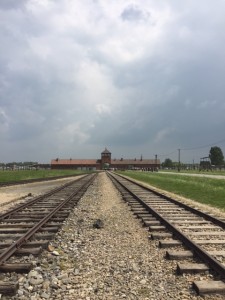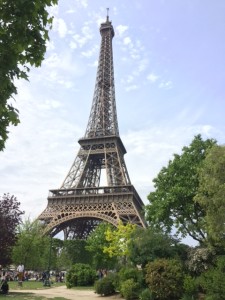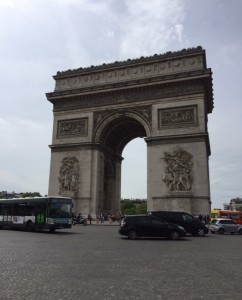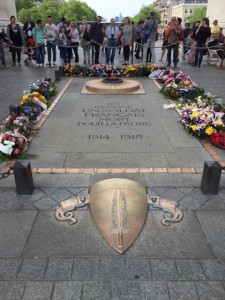The Memorial to the Murdered Jews of Europe is located near the Brandenburger Gate in central Berlin. It was built in May 2005 to commemorate the 6 million Jews that were murdered during the Holocaust. The aboveground section of the memorial consists of a field of stelae, giant concrete blocks, that are arranged in a disorienting manner. The display is meant to confuse and isolate visitors, mimicking emotions of the concentration camps. This section of the memorial is not clearly marked, and I witnessed many people sitting on the blocks, chatting and eating, with no regard for the purpose of the memorial. However, there is an underground section that is explicit and descriptive. It consisted of photos, first hand accounts, text descriptions, original documents, and video/audio components all depicting how the Nazis decimated the Jewish population of Europe and what the Jewish population actually looked like. The memorial gave detailed descriptions of families and individuals, forcing visitors to acknowledge the personal side of tragedy. Most memorials or museums give a few firsthand accounts and then generalize the Jewish experience during World War II.
Although no two tragedies can be compared, they can be treated similarly by the government. I also visited the Memorial to Homosexuals Persecuted Under Nazism, which is located in Tiergarten, directly across the street from the previously mentioned memorial. This memorial is also a giant concrete block, but it has a video screen sunk into the stone, visible through a glass window. The video screen simply showed a short clip on repeat of two young men kissing in a park. Although the webpage for the memorial claims that there is a signboard near the memorial that describes the persecution of homosexuals by the Nazis, I could not find one at the site. I did not even discover the name of the memorial until I searched online for more information, as the site itself had only given me the bare minimum. I was deeply saddened by the lack of care and respect put into the memorial to homosexuals, as they were also imprisoned in concentration camps, murdered, beaten, and persecuted. Also, the memorial was not constructed until 2008, 63 years after the end of World War II, and it was frequently vandalized that year. Obviously, the scale of tragedy does not compare to the suffering of 6 million Jews, but it still deserves to be properly acknowledged. The persecution of homosexuals and the rest of the LGBTQ+ community still occurs in many of the countries that participated in World War II, making these public memorials all the more important.
